Are you looking for a lush, green lawn? The process of overseeding your Bermuda grass is one way to help ensure healthy and attractive results. Overseeding involves introducing new seeds into an existing turfgrass bed. This method helps introduce disease resistance varieties alongside the current selections, resulting in improved vigor and health of your turf. In this blog post, we’ll cover some practical tips and tricks on how to overseed bermuda grass including preparation steps, seed selection advice and application rates to give you the best results!
Table of Contents
Should You Overseed Bermuda Grass?
There are several reasons why you may decide to overseed your bermuda grass lawn. It can help improve the appearance of a thinning lawn and also give it a greener and fuller look. Overseeding with another type of grass can also make your lawn more resistant to drought, disease, and insects. If you’re considering overseeding your bermuda grass then there are some important points to consider first:
- Do you have the right conditions for successful seeding? Different types of grasses require different temperatures or soil pH levels in order to grow properly. Make sure that the area you plan on overseeding is compatible with both the existing bermuda grass as well as any new grass seed you would like to use.
- Have your soil tested before seeding. The pH levels of soil can greatly affect the outcome of the seeding process. If the pH levels are too high or too low, it could cause the seed to not germinate properly or even kill it altogether.
- Are you ready to commit? Overseeding takes multiple steps and may require several months before any results are visible. Once you’ve seeded your lawn, it will be important to maintain regular watering, mowing, and fertilizing in order for the grass to thrive.
Overall, if you have a thinning bermuda grass lawn then overseeding may be a good option for improving its appearance and durability. However, it is important to consider all of the necessary factors before committing to this process in order to ensure a successful outcome. [1]

When To Overseed A Bermuda Grass Lawn?
For optimal health of the turf, overseeding a Bermuda grass lawn should occur when soil temperatures are between 65 and 75 degrees Fahrenheit – preferably during autumn or spring. Overseeding is most successful if done in the daytime so that the seed has time to germinate and become established before nighttime temperatures drop.
Following these steps will ensure proper establishment of the newly seeded area and overall success with overseeding your Bermuda grass lawn. [2]
How To Overseed Bermuda Grass?
Overseeding Bermuda grass is a great way to make sure your bermuda lawn is healthy and lush. Here are some tips for how to overseed bermuda grass:
- Start by mowing the existing lawn down to a height of 2-3 inches. This will help the new seed attach itself to the soil better, so it can germinate faster and establish a strong root system.
- Take a soil test to determine which fertilizer should be used, as well as what kind of soil amendments may need to be applied. The type of seed you use will also depend on the results of your soil test.
- Spread 1/4 inch thick layer of compost or aged manure over the lawn. This will help to lighten the soil, making it easier for seeds to germinate.
- Purchase the correct type of seed for your area and spread it evenly across the grass. After sowing, apply a thin layer of straw or hay on top to keep moisture in and prevent birds from eating the seeds.
- Water your newly overseeded turf lightly but frequently, as this will encourage proper root growth. This can be done with a watering hose or sprinkler system.
- Finally, fertilize your new bermuda grass when it has reached 3-4 inches tall. Use a slow-release fertilizer that is specifically formulated for bermuda grasses so that you don’t burn the turf. Once your grass is established, it should be fertilized every 6-8 weeks during the growing season.
Following these steps will help ensure that your bermuda lawn is healthy and lush for years to come! [3]
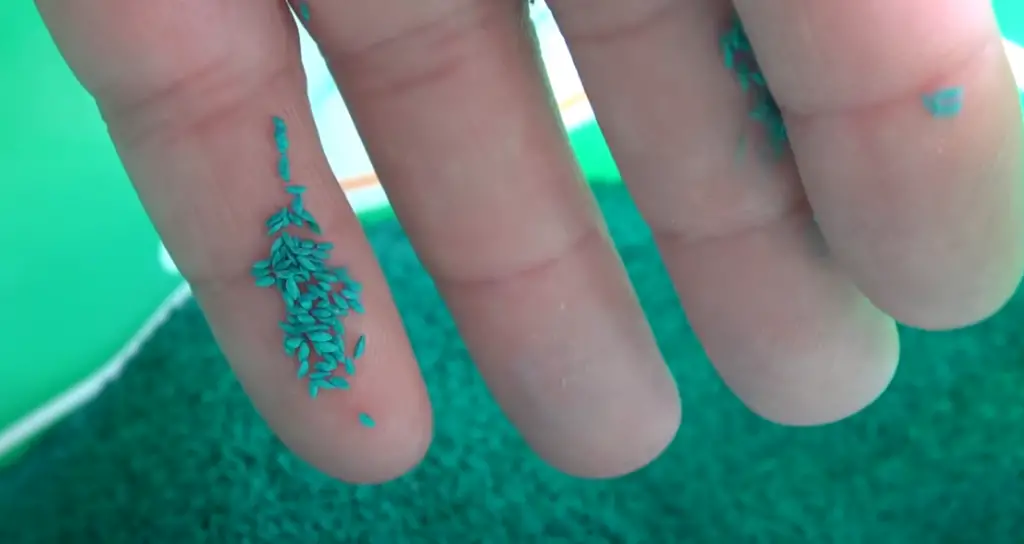
Grass Mix: What Grass Seed To Overseed With
Zoysia
Zoysia is a great choice for overseeding warm-season grasses like Bermuda, as it is extremely heat and drought tolerant. It grows well in both full sun and partial shade, making it a versatile option for areas where Bermuda will struggle to grow.
Ryegrass
Ryegrass is another good option for overseeding Bermuda grass. It germinates quickly and helps suppress weed growth while the new Bermuda grass becomes established. It can be used on its own or in combination with other seed varieties such as zoysia or fescue.
Fescue
Fescue can also be used to overseed an existing bermuda lawn. It needs some shade and moist soil conditions, but it is a hardy grass that can withstand warm summer temperatures. Fescue also tends to be more winter-hardy than other cool season grasses, so if you live in an area with cold winters, it may be the best choice for overseeding your lawn.
Hybrid Bermuda Grass
Finally, some hybrid varieties of Bermuda grass are now available that are specifically designed for overseeding existing lawns. These hybrids have been developed to be more drought tolerant and resistant to diseases, which makes them ideal for areas with hot summers or poor soil conditions.
No matter what type of seed you choose to overseed your lawn with, the key is to make sure it is adapted to your local climate and soil conditions. With a little research and planning, you can find the perfect grass mix for your area and successfully overseed your Bermudagrass lawn! [4]
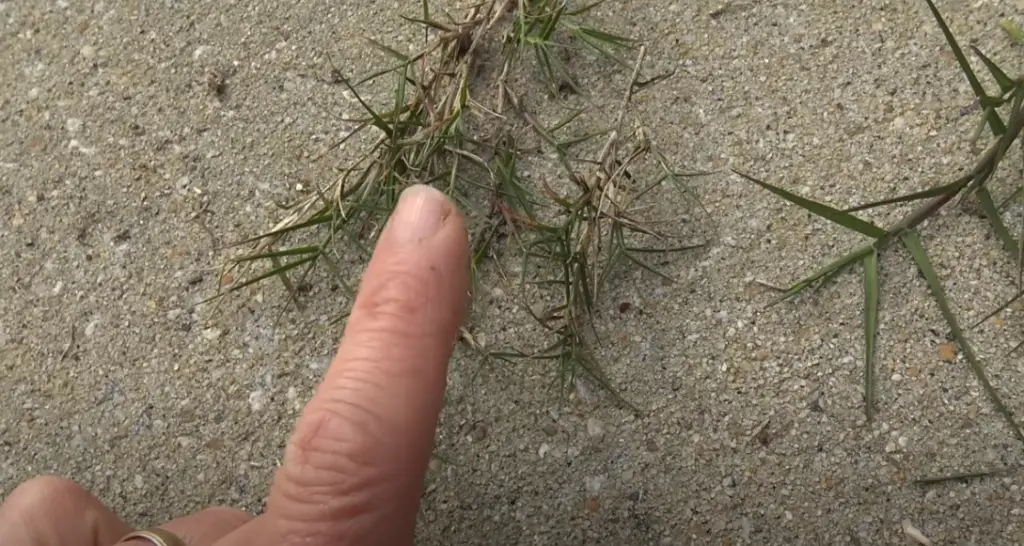
Mowing And Lawn Care After Overseeding
When you have finished overseeding, it is important to take care of the lawn properly following your efforts. The newly-germinated grass will require regular mowing and watering in order to get established. Mow regularly but lightly, removing only about one-third of the total height of the grass with each trimming. This ensures that all plants in the mix will be given an even chance to grow and develop strong roots.
Once your grass has been given time to get established, you should be able to enjoy a lush, green lawn! With minimal effort and some patience, overseeding can help restore any areas of thinning or bare spots in your otherwise healthy lawn. Following the proper steps for prepping, seeding and post-seeding care can make a huge difference in the health of your Bermuda grass. [5]
Can You Overseed In The Fall?
Yes, it is possible to overseed bermuda grass in the fall season. The best time of year for overseeding is when temperatures are between 65-75 degrees Fahrenheit and day lengths are shortening. This typically occurs in late summer or early fall. Overseeding during this period will give your lawn a jump start on greening up for the spring months ahead.
When overseeding your lawn in the autumn season, you should use a cool-season grass variety such as rye or fescue instead of a warm-season variety like Bermuda grass. Cool-season varieties grow better during cooler temperatures than warm-season varieties do and they help fill in areas that may have been damaged due to summer heat or drought conditions.
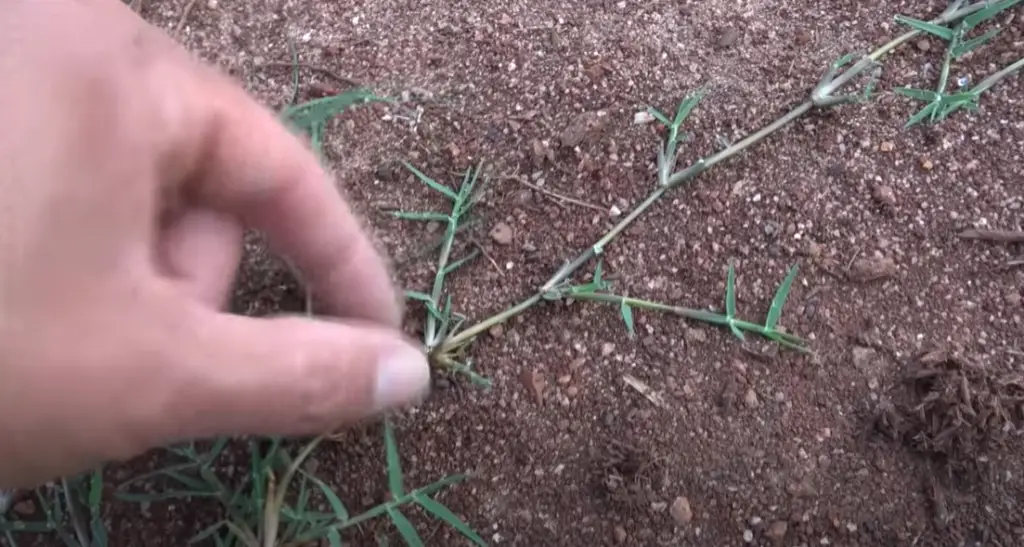
Benefits Of Overseeding Bermuda Grass
Overseeding Bermuda grass is one of the most effective ways to maintain a healthy and vibrant lawn. Overseeding can help the grass grow in thicker, greener patches that are more resistant to diseases and weeds. It can also improve the overall health and vigor of your lawn. Overseeding is a relatively simple process that does not require specialized equipment or materials. Here are some of the benefits of overseeding Bermuda grass:
- It helps thicken up thin patches in an otherwise healthy lawn by introducing new turf species into existing areas. This reduces competition between neighboring plants, which leads to better overall growth and increased density in thin spots.
- Overseeding increases drought tolerance by introducing deep-rooted perennial rye grasses. These grasses are more drought-tolerant than Bermuda, allowing your lawn to withstand dry periods with less stress and damage.
- Overseeding introduces nutrients into the soil. Newer grass species can also add additional organic matter to the soil, which helps keep it healthy and fertile for future growth.
- It reduces weed problems by filling in open areas with new grass plants that crowd out weeds. This makes it harder for them to gain a foothold and spread throughout the lawn.
- For homeowners with warm-season turfgrasses such as Bermuda, overseeding helps promote green color during cooler months when these grasses tend to go dormant or yellow in color. This keeps your lawn looking lush and green all year round.
Overseeding Bermuda grass is a great way to maintain a healthy, vibrant lawn. By introducing new turf species, increasing drought tolerance, and reducing weed problems, your lawn will stay looking its best for years to come. So if you’re looking for ways to improve the health of your Bermuda grass, overseeding may be just what you need! [6]
Can You Overwater Bermuda Seed?
The answer to this question is both yes and no. Overwatering can be beneficial for germinating Bermuda grass seed, as it helps to keep the soil moist and encourages root development. However, once seeds have already sprouted, overwatering will not benefit them any further; in fact, it can lead to weaker plants that are more susceptible to disease and insect damage.
The key thing to remember when overseeding Bermuda grass is that the soil should never be saturated or waterlogged; a light watering once or twice a day is usually sufficient. Additionally, sprinklers should not be directed at the newly-emerging seedlings so as not to wash them away or drown them in too much water.
Lastly, choosing an appropriate time of year to seed your Bermuda grass can also help ensure success. Watering needs vary depending on the season, but in general, it’s best to avoid overwatering during hot summer months. The cooler temperatures and longer days of spring are usually a better choice for seeding Bermuda grass.
Ultimately, the amount of water needed for successful overseeding of Bermuda grass will depend on factors such as soil type and climate conditions. If you’re unsure how much or how often to water your Bermudagrass seeds, it’s always best to consult with an experienced local turf-care professional before starting your project. With the right care and attention, you can be sure that your Bermuda grass will thrive!
Does Bermuda Seed Grow Fast?
Yes, Bermuda grass seed grows quickly and can reach maturity in as little as two weeks. To get the best results from your seeding efforts, prepare the soil properly before planting and ensure that you keep it consistently moist during germination. Once established, Bermuda grass is a hardy grass that is easy to maintain and can survive in a variety of climates. With proper care and overseeding, you can have a lush lawn all year long!
For optimal growth, choose the right type of Bermuda grass seed for your area. You’ll also need to know when to plant: while late spring or early summer are generally recommended times for seeding new turfgrass, warm season varieties like Bermuda Grass should be planted between May and August when soil temperatures reach 60-65°F or higher. You should also test the soil for pH levels and nutrient content prior to planting and adjust it as needed with fertilizer, lime, or other amendments.
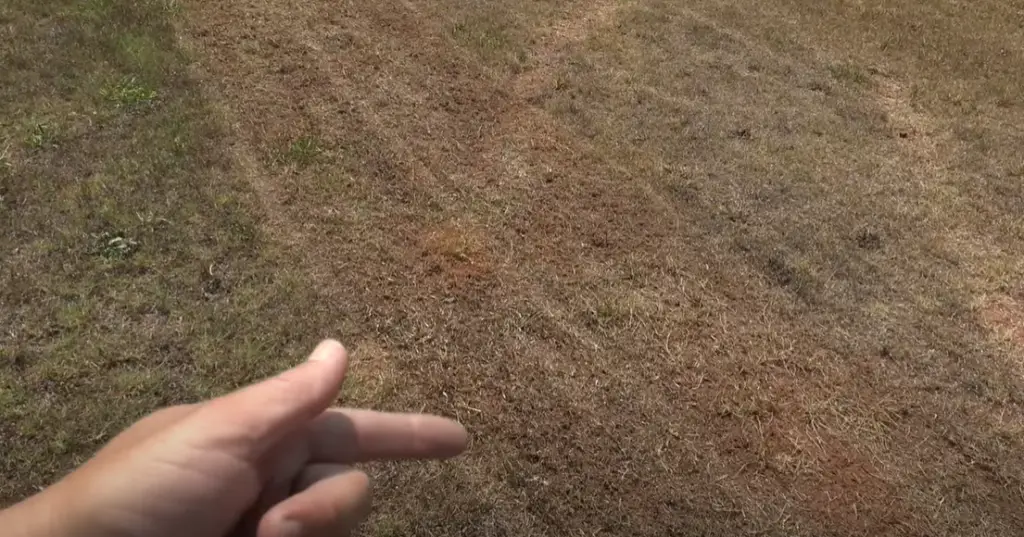
How Much Sun Does Bermuda Seed Need?
When overseeding bermuda grass, it is important to consider the amount of sun that the newly seeded areas will receive. Bermuda seed needs a minimum of 6-8 hours of direct sunlight each day in order for it to reach its full potential. If the area you are overseeding has less than this, then you may want to look at other grass varieties that can better handle shady conditions.
Finally, when overseeding in an area with limited sun exposure, make sure to water the seeds more frequently than you would in a sunny area. This will keep the soil moist and encourage better growth for the bermuda seedlings. With proper care and attention, you should be able to successfully overseed your bermuda grass no matter what type of sunlight it receives! [7]
FAQ
What is the best overseeding for Bermuda grass?
For the best overseeding results, it is recommended to use a top-quality cool-season grass seed mix, such as a blend of perennial ryegrass and tall fescue. This combination will provide a lush green lawn throughout the colder months while maintaining its aesthetic appeal in summer when temperatures rise. It’s also important to choose a seed that is designed specifically for your climate and region.
What are some tips for successful overseeding?
Before you begin overseeding, it’s important to prepare your Bermuda grass by aerating it and removing any dead or existing weeds. Once this is complete, make sure you evenly spread the seeds across the entire area at a rate of 15 pounds per 1,000 square feet. Water the seeded area lightly each day and be sure to mow it regularly during the growing process. Finally, keep an eye out for any signs of disease or pests and act accordingly.
What is the best time to overseed Bermuda grass?
The best time to overseed Bermuda grass is in late summer or early fall when temperatures are cooler but not excessively cold. This will allow the seeds to germinate without being subjected to extreme heat or frost damage. It’s also important that you seed before any heavy rains occur, as this could wash away some of your recently planted seeds. Once seeded, make sure you water generously until new growth appears and continues thereafter until your lawn has reached its desired height and thickness.
Can you just throw out Bermuda seed?
No, simply throwing out Bermuda seed will not guarantee successful germination and growth. For the best results when overseeding Bermuda grass, it is important to prepare the area before seeding. This involves mowing the lawn low, dethatching or aerating if needed, applying fertilizer and making sure the soil has a pH of 6-7. Then lightly rake the surface to prepare for seeding and apply an overseed mixture at a rate of 5-10 pounds per 1,000 square feet, depending on your desired coverage level. After spreading the seed gently rake it into the topsoil using a light hand and then water generously. Continue watering regularly until you see signs of new growth emerging from the soil. It’s important to keep the area moist while the seed is germinating, but avoid over watering. Once you see signs of new growth, reduce watering frequency and mow as needed.
Why do you put sand on Bermuda grass?
Sand is often used when overseeding Bermuda grass because it helps to improve soil drainage and reduce compaction in the lawn. Sand also provides a better surface for germination of the new seed, allowing more sunlight to reach the seeds and helping them take root faster. Additionally, sand can help ensure even coverage of the new seed on your lawn by filling in any low spots or bare patches. When overseeding with sand, it is important to use high-quality topsoil or horticultural sand that is free from weed seeds and other contaminants. Finally, once you have added the sand to your Bermuda grass lawn, be sure to water thoroughly so that the new seed takes root properly.
Useful Video: Overseeding Bermuda Lawn
Conclusion
Overseeding Bermuda grass is a great way to keep your lawn looking lush and healthy. It has many benefits, including improved disease resistance, better drought tolerance, and enhanced weed control. To get the most out of overseeding, it’s important to use the right seed mix for your climate, prepare the soil properly before sowing, provide adequate water during germination and after establishment, mow regularly to encourage growth and discourage weeds, apply fertilizer as needed and aerate heavily at least once a year. With proper planning and maintenance, you can ensure that your lawn remains vibrant for many years to come!
References:
- https://www.lawnandpetal.com/bermuda-grass-how-to-overseed-for-a-beautiful-lawn/
- https://sodlawn.com/overseeding-your-bermuda-grass/
- https://www.naturesseed.com/grass-seed/bermuda-grass/how-to-plant-and-grow/
- https://www.crabgrasslawn.com/when-to-overseed-bermuda-grass/
- https://lawnmodel.com/overseeding-bermuda-grass/
- https://sodlawn.com/overseeding-your-bermuda-grass/
- https://extension.arizona.edu/overseeding-bermudagrass-lawns-annual-ryegrass

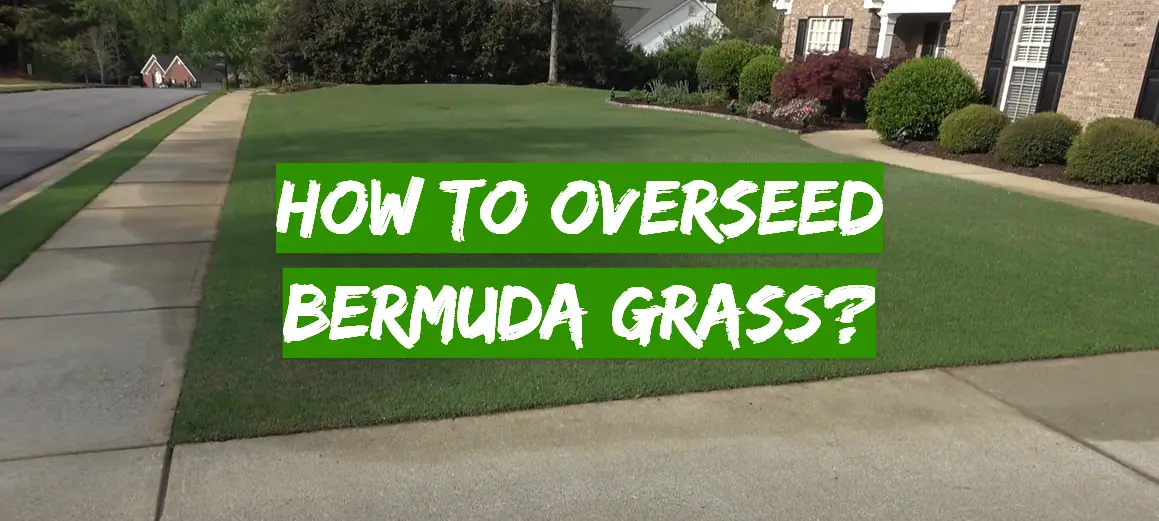


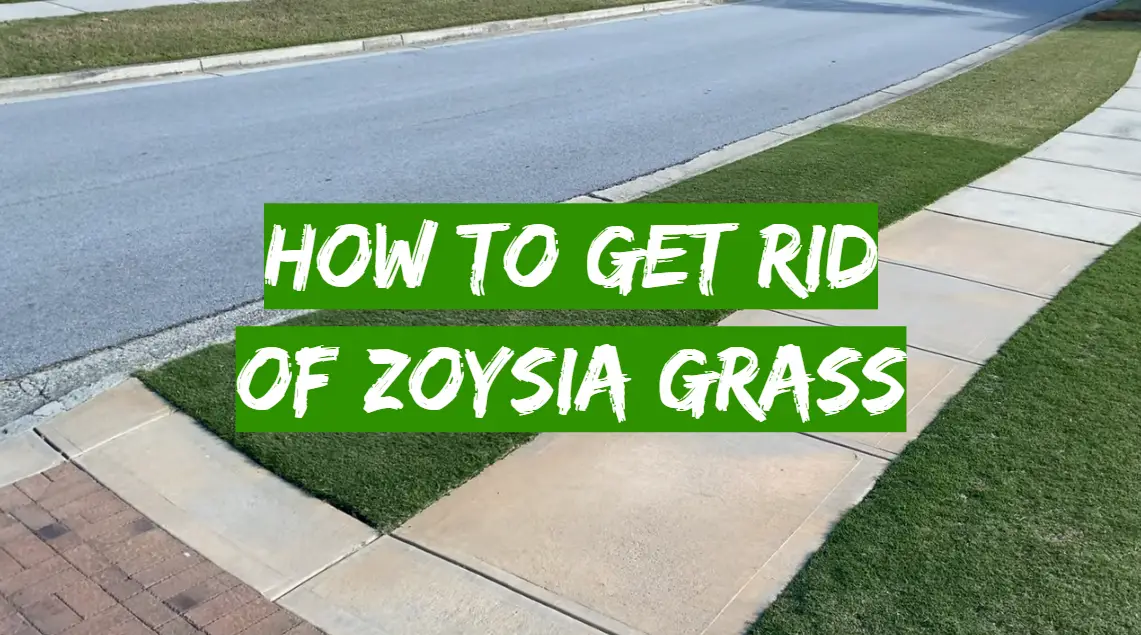


Leave a Reply
View Comments